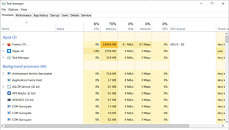
Western Digital Unveils World's Highest Capacity 2.5" Portable HDDs
With the explosion of digital content, people need bigger and more robust solutions to help access and preserve it all. Western Digital today is introducing a portable HDD expansion across its WD, WD_BLACK and SanDisk Professional product lineups, boasting the world's highest storage capacity in a 2.5" portable HDD. The WD My Passport portable HDD line, WD_BLACK P10 Game Drive and SanDisk Professional G-DRIVE ArmorATD will all now be available in 6 TB capacities.
"Expanding our portfolio with the world's first 2.5" 6 TB portable hard drive is an incredible technological achievement, and it enables us to continue pushing the boundaries of what's possible," said Nitin Kachhwaha, Director of Product Management at Western Digital. "Offering up to 6 TB in such a small form factor and accessible price point gives everyone - from students, gamers, professional videographers, and more—greater flexibility to create and keep even more of their essential content in one portable drive."
"Expanding our portfolio with the world's first 2.5" 6 TB portable hard drive is an incredible technological achievement, and it enables us to continue pushing the boundaries of what's possible," said Nitin Kachhwaha, Director of Product Management at Western Digital. "Offering up to 6 TB in such a small form factor and accessible price point gives everyone - from students, gamers, professional videographers, and more—greater flexibility to create and keep even more of their essential content in one portable drive."




















